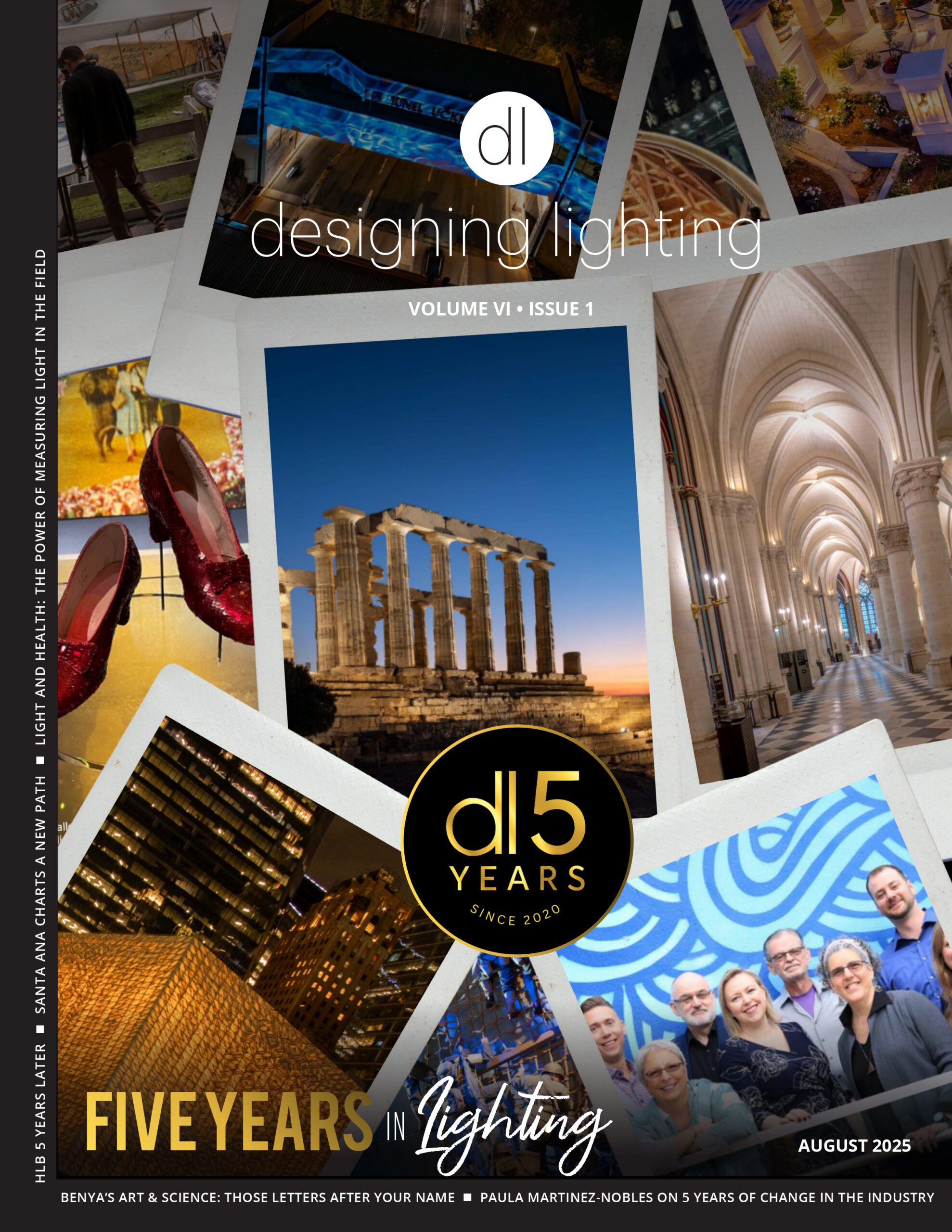Illuminating with Dark: An Interview with the Light Collective in Tuscany
In the heart of Tuscany, a 1200-year-old monastery set the stage for an inspiring lighting design workshop. Randy Reid, editor of designing lighting (dl), sat down with Martin Lepton and Sharon Stammers from the UK-based Light Collective. Together, they explored how to balance lighting heritage buildings with preserving the natural beauty of dark skies. This unique setting provided the perfect backdrop for their workshop, which offered hands-on lessons for lighting professionals.
A Workshop Focused on Heritage and Dark Skies
The remote village in Tuscany, known for its dark skies, served as the ideal location to highlight this important topic. Lepton and Stammers explained that their goal was to teach participants how to light historical buildings while respecting the surrounding environment.
“Our focus is on protecting both the heritage structures and the dark skies,” Lepton explained. The workshop encouraged participants to explore techniques like dimming and light control to reduce glare and maintain the beauty of the night sky.
The Start of the Dark Sky Movement
The Light Collective’s commitment to dark sky preservation is not new. During the interview, Lepton and Stammers shared a story about an event they hosted at LightFair in Las Vegas. There, they took 60-70 lighting designers out to the desert, far from the city lights. The contrast between the clear night sky and the light pollution from Las Vegas made a lasting impression.
“It was a defining moment for us,” Stammers said. “We saw firsthand how light pollution affects our connection with the stars.” This experience marked the beginning of their mission to educate the lighting industry about the importance of reducing light pollution.
Changes in the Lighting Industry
Over the last 15 years, the lighting industry has evolved, with manufacturers now creating products designed to minimize light pollution. “The shift over the past five years has been remarkable,” said Lepton. “Manufacturers are now producing optics and solutions that help reduce light pollution while still meeting lighting needs.”
New innovations, such as color temperature controls and precise optics, allow professionals more opportunity for illuminating with dark. Workshop participants experimented with these new tools, thanks to the support of leading brands like Thorn, Studio Due, and Luchan Light.
Illuminating with Dark: Technology’s Role in Reducing Light Pollution
One of the workshop’s highlights was the use of cutting-edge control technology. Through apps, participants could adjust the intensity, color, and beam focus of the lights. “This kind of real-time control changes everything,” Reid noted. “It could be the key to significantly reducing light pollution.”
Lepton agreed, adding that these technologies are becoming more accessible, even outside the professional lighting industry. This could lead to widespread changes in how outdoor lighting is managed, making it easier to protect dark skies.
A Global Effort to Preserve Dark Skies
Despite the progress in lighting technology, the path forward remains complex. Lepton and Stammers discussed the need for unified action across different regions. Recently, they participated in a conference in London where global representatives discussed how to standardize efforts to protect dark skies.
“There’s so much information out there, it can overwhelm policymakers,” Stammers explained. “That’s why initiatives like Roland (Responsible Outdoor Lighting at Night) and ALAN (Artificial Light at Night) are so critical. They help create guidelines everyone can follow.”
Light Collective’s New Projects and Publications
In addition to their dark sky work, the Light Collective is involved in other exciting projects. They are curating events like Disrupture, which explores how new technologies such as AI and immersive design could disrupt the lighting industry. They are also advocating for women in lighting through various initiatives.
Lepton and Stammers announced the upcoming release of their new book, focusing on women working in entertainment lighting. “Our book celebrates women in stage, TV, and concert lighting, an industry with very few women,” said Stammers.
Their passion for lighting design extends beyond technical expertise, as they continue to push boundaries and inspire others in the industry.
This interview with Martin Lepton and Sharon Stammers of the Light Collective sheds light on the future of sustainable lighting. Their work in Tuscany exemplifies how lighting design can preserve both heritage and nature. As the lighting industry continues to evolve, workshops like this will be key in promoting responsible lighting practices worldwide.
Watch the full interview on YouTube to learn more about how the Light Collective is leading the way in lighting design and dark sky preservation.
Read my article about Day 1 of Going Dark 2024



